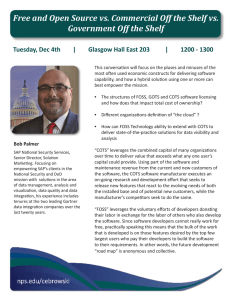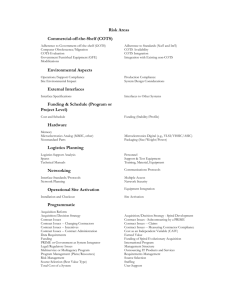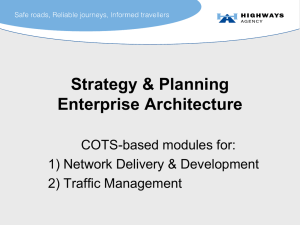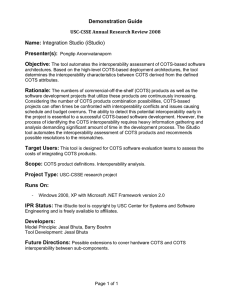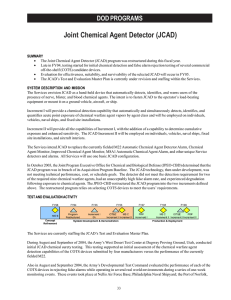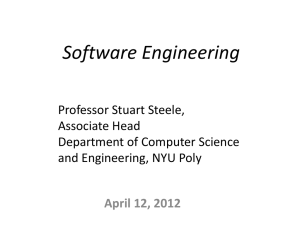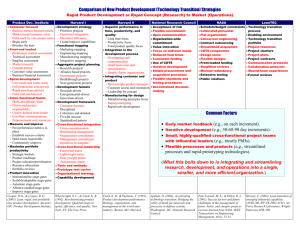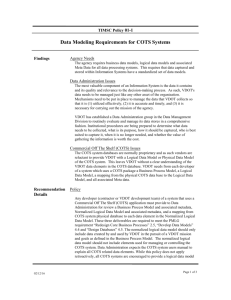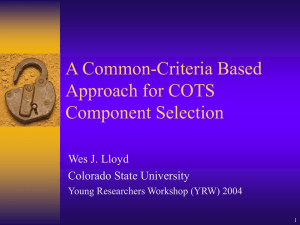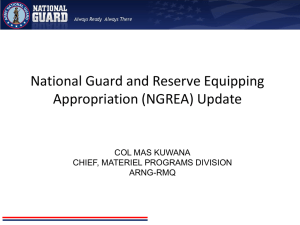COMMERCIAL OFF-THE
advertisement
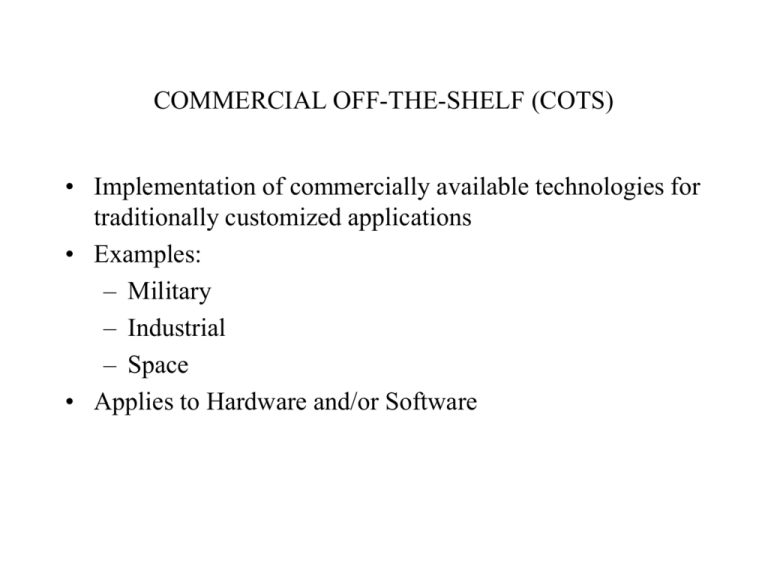
COMMERCIAL OFF-THE-SHELF (COTS) • Implementation of commercially available technologies for traditionally customized applications • Examples: – Military – Industrial – Space • Applies to Hardware and/or Software COMMERCIAL OFF-THE-SHELF (COTS) (continued) • Examples: Software: Operating Systems (UNIX, Windows/NT, OS2) Databases (Oracle, Sybase) Graphics Packages (Motif, ??) Hardware: Busses (VME, PCI, cPCI) Processors (Motorola, HP, Sun, Intel) Disk Drives (Western Digital, Red Rock) Peripherals (Printers, Monitors, Keyboards, etc.) COMMERCIAL OFF-THE-SHELF (COTS) (continued) • COTS vs. Custom Advantages: Cheaper (large quantity production) General Purpose (more flexible for different applications) Shortens design-to-production cycles Large user base generally uncovers design defects early Provides current technology solutions Emerging technology tends to be backward compatible with legacy products (allows solutions to advance with technology) Avoids binding solution to single hardware/software source COMMERCIAL OFF-THE-SHELF (COTS) (continued) • COTS vs. Custom Disadvantages: May not be suitable for all applications: Highly deterministic performance may require special operating system Environmental constraints (temperature, radiation exposure, corrosive exposure) Packaging (size, weight, shape) Reliability: May not meet reliability requirements of mission critical systems (flight control, weapons direction, medical equipment) Obsolescence: COTS binds user to market trends - critical components may become unavailable and impossible to reproduce COMMERCIAL OFF-THE-SHELF (COTS) (continued) • Examples where COTS has replaced traditional (custom) systems – – – – – – Space Shuttle (non mission-critical systems) Missile Guidance systems Military ground based and shipboard sensors (radar, sonar) Industrial control and monitoring systems telecommunications Air traffic control COMMERCIAL OFF-THE-SHELF (COTS) (continued) • Issues and Considerations when using COTS – Supporting, maintaining, and upgrading systems with long life-cycles (10+years) – Licensing and Data Rights • COTS Software is usually distributed under license (a per-user fee is typical) • COTS documentation is normally copyrighted - distribution as part of another product usually requires special arrangements and a copy fee • Software source code and designs for hardware are usually proprietary and protected by copyright or patent - even after it is no longer distributed
